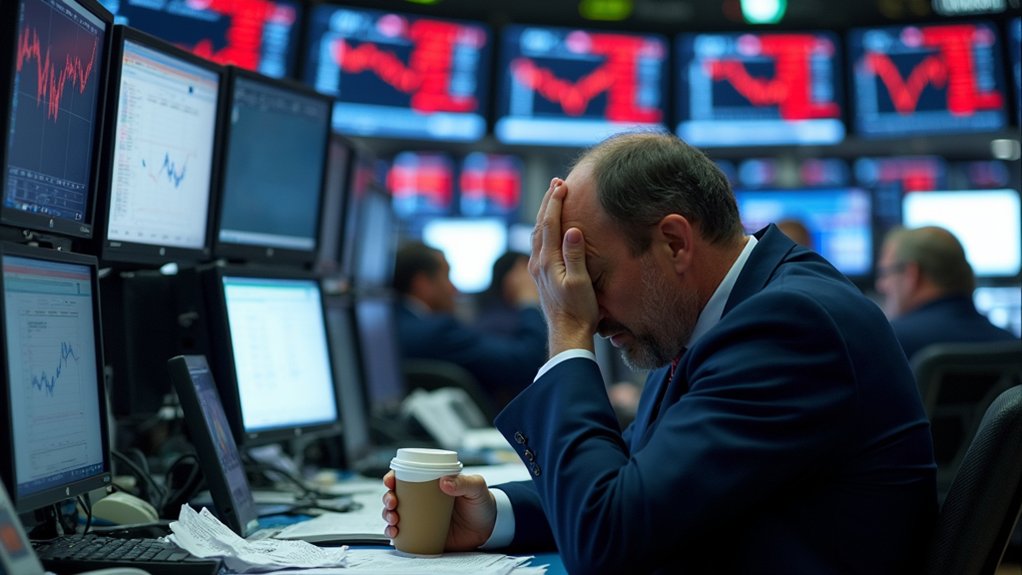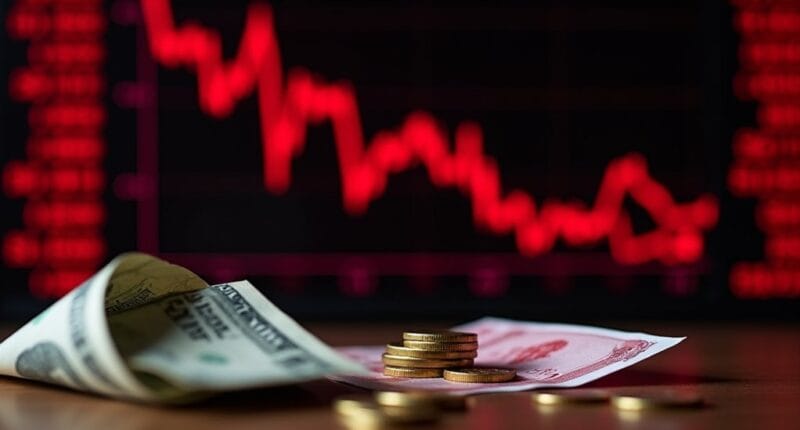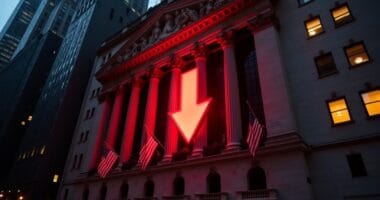Global markets took a nosedive after Trump’s executive order slapped massive tariffs on Chinese imports. The move sparked chaos, with China dumping U.S. Treasuries and the dollar weakening dramatically. Treasury yields shot up 60 basis points in a week as international investors rushed for the exits. Sri Lanka and Taiwan hit back with their own tariffs, while the Fed faced a messy dilemma. This financial earthquake would soon send aftershocks worldwide.

Global markets reeled Thursday as President Trump’s latest salvo in the trade war with China sent shockwaves through financial systems worldwide. His executive order on April 8, 2025, slapping steep tariffs on Chinese imports, triggered a massive sell-off in U.S. Treasuries and sent the dollar tumbling. Market participants didn’t see this one coming.
The impact was swift and brutal. Treasury yields surged by 60 basis points in just a week – the biggest move in five years. Bond traders dumped their holdings like they were on fire, sending the benchmark 10-year yield skyrocketing. The U.S. dollar took it on the chin, weakening against major currencies as international investors reconsidered their positions. The bid-ask spread widened dramatically as market makers struggled to maintain orderly trading.
Things got messier when other countries jumped into the fray. Sri Lanka and Taiwan slapped retaliatory tariffs ranging from 28% to 44% on various goods. Hedge funds running basis trades got caught with their pants down, exposing some serious cracks in the financial system’s foundation. The America First Trade Policy drove these aggressive measures against trading partners.
China’s response didn’t help matters. They started dumping U.S. Treasuries and loading up on gold instead. The move away from dollar-centric trade suddenly didn’t seem so far-fetched. Supply chains started creaking under the strain, and multinational companies scrambled to figure out their next move.
The Federal Reserve is now stuck between a rock and a hard place. With Treasury markets in chaos and borrowing costs threatening to spiral, speculation is mounting about potential intervention. Meanwhile, inflation fears are creeping in as import costs rise due to the weaker dollar.
The whole mess has exposed just how interconnected – and fragile – the global financial system really is. What started as a tariff announcement has morphed into a full-blown market crisis, complete with volatile currencies, disrupted trade flows, and nervous investors.
And here’s the kicker: nobody’s quite sure how this ends.





